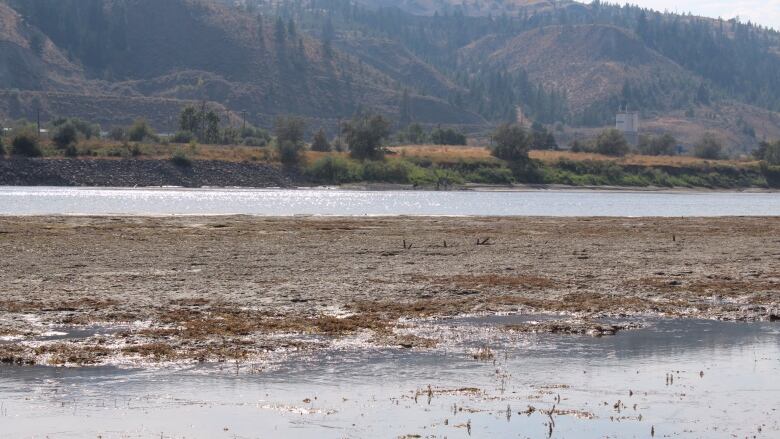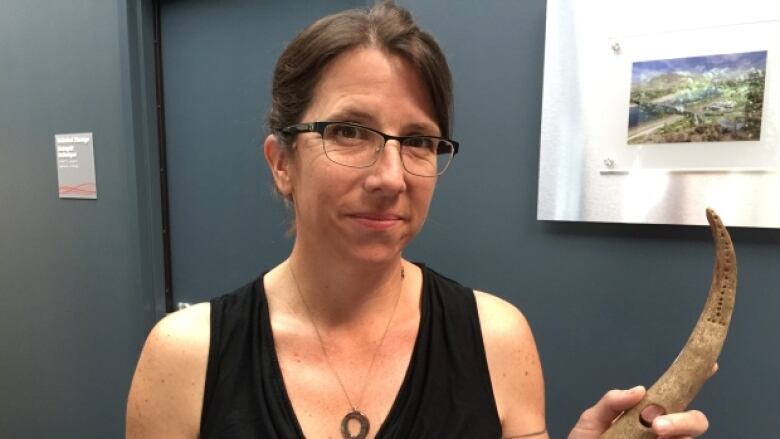1,000-year-old artifacts revealed as Thompson River water level drops
Archeologist describes what to look for and how to protect historical finds

Wooden stakes, steel chains, stone tools and chunks of modern construction material are just a few of the objects people are discovering along the Thompson River in Kamloops as the water level drops.
Some of those artifacts date back more than a thousand years, and, in an area rich in Indigenous history, archeologist Joanne Hammond said it's a chance to learn more about the area.
She took CBC's Doug Herbert on an archeological walking tour of the river, just west of Riverside Park, pointing out sites of historical interest and explaining the different kinds of objects that have been surfacing recently.
The most commonly found artifacts from the pre-contact period, Hammond said, are stone tools or their remains.

"Particularly when the water drops quickly like this, they become exposed and they are shiny and clean and they are more obvious than at other times of the year," Hammond said.
Stone tools are not rare, she said, but it is unusual to find whole tools especially in the same place where they were initially left. For Hammond, she is more intrigued by objects made of organic materials, like wood, that are less frequently exposed and usually protected by the water.
"Things like the wooden stakes that are 1,500 years old and are still sharp as the day that they were planted, I find that fascinating and exhilarating," she said.

Revealed by the river
Along with artifacts from a millennium ago, there are also more recent historical objects like fish weirs, docks and cribs, remnants from the logging industry and other old infrastructure.
The river levels fluctuate annually, falling with cold temps and rising again with melts, exposing things previously hidden by water.
Starting in August to September, Hammond said, the river drops several metres and she starts to hear more reports from people about interesting objects they have discovered in the area.
Hammond emphasized that these kind of historical artifacts are protected and advised passersby not to move them if possible.
Take a photograph, drop a pin on Google Maps with your phone and call the museum, she said.
"It can stay there, it's not an emergency that it get whisked away," Hammond said. "We'll learn more about the history of this place if we find those artifacts where you found them."
With files from Doug Herbert












_(720p).jpg)


 OFFICIAL HD MUSIC VIDEO.jpg)
.jpg)



























































































